The first thing we need for this new project is a plan. One quote that I heard recently that is attributed to Ike (among others) is “Plans are nothing, but planning is everything.” So I have begun planning this new banjo, keeping in mind that things can (and probably will) go awry. That is why it is an adventure.
I have decided that I like the neck that I made for my most recent gourd banjo, so I am going to make the same neck for this banjo. You can see the story of how I made the gourd banjo and how it turned out at How I Built a Gourd Banjo - III. I have taken the plans for the neck from that project mostly unchanged.
First, I will make a neck blank out of a curly maple board that is a 1 X 4 inch board that is 6 feet long. In fact, it is the second half of the same board that I used to make the neck for the gourd banjo, so these two necks will be very similar indeed. Here is the plan to glue up the neck blank.
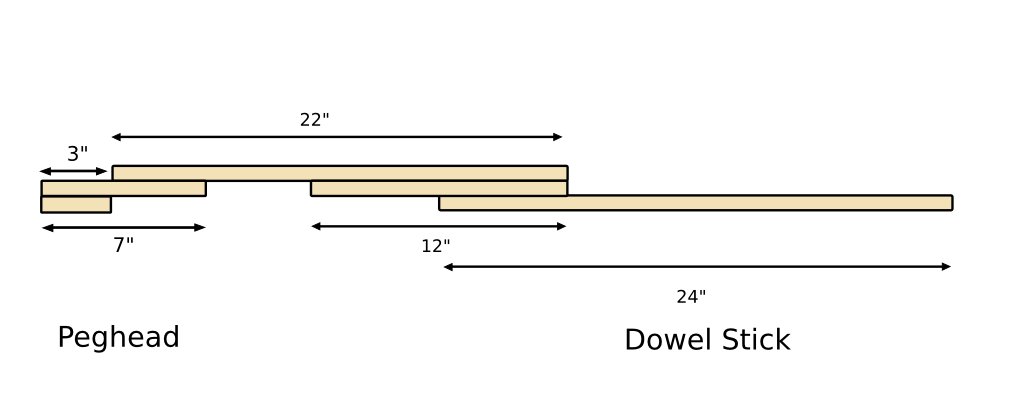
Neck Blank
The peghead will be cut from the blank as shown in the drawing below.
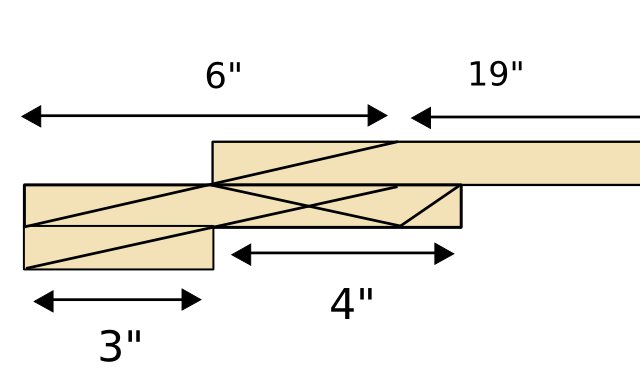
The Peghead Will Be Cut Like This
I have modified the plan slightly from the previous neck in order to get a more gradual blend of the handstop into the peghead. Here is the area where I did the modification.
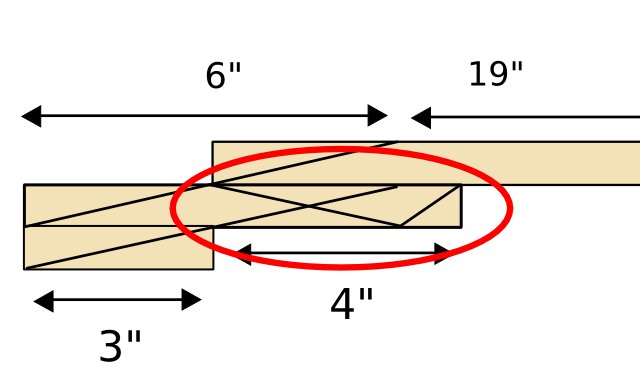
The Area in the Red Oval Is Different
The area inside the red oval now has a more gentle slope than it did on the other neck. On the other neck, the handstop turned out to be sort of a bump on the back of the neck, and I want to make this one a more gentle transition to the back of the peghead. So the line slants at a more shallow angle.
If I add up all the lengths that are shown in the drawing, I get:
| Bottom of peghead | 3" |
| Middle of peghead | 7" |
| Top of neck | 22" |
| Heel | 12" |
| Dowel stick | 24" |
| --------- | --------- |
| Total | 68" |
When I measured the length of the board, I found that it is really 73 1/2" instead of 72". That leaves me with 5 1/2" of board left after I cut out the parts that I need. That ought to work.
Here are some pictures of the board itself.
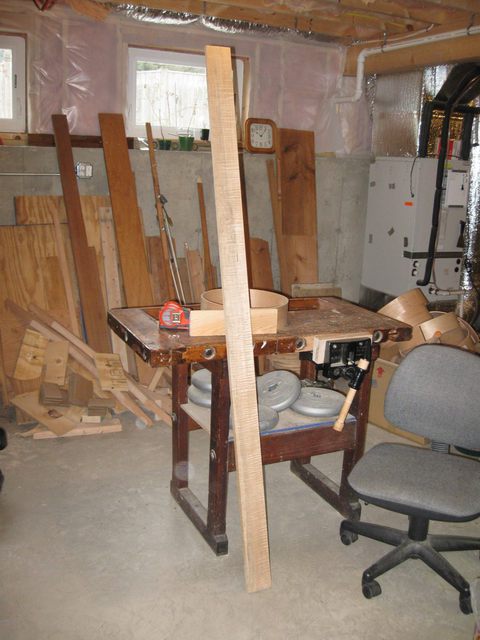
The Neck Board
I picked out this board because it has both nice figure (curly) and some nice grain as well. You can kind of see this in the photo below, although the photo does not do justice to the beauty of the board in person.
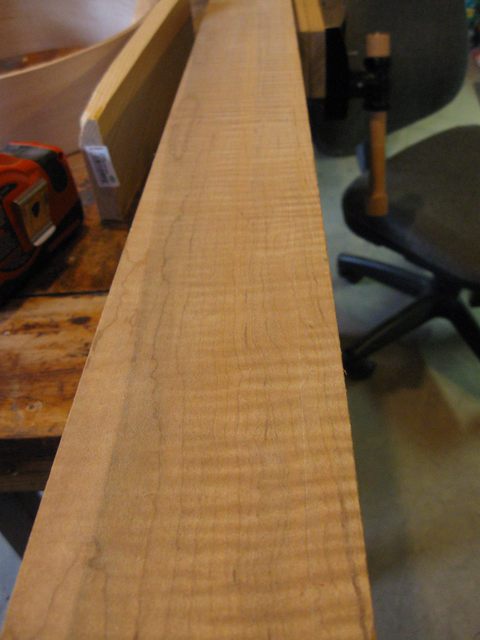
The Curly Figure and Grain
While going over the board, I noticed that it has some checking on one end of it.
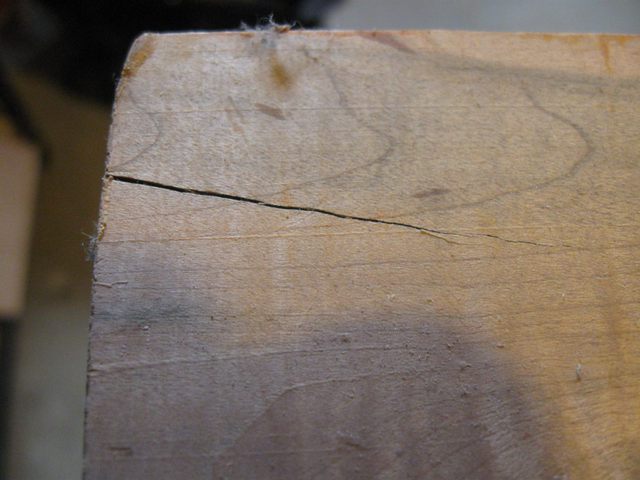
There is Some Checking
Since I have about 5 1/2" of it left over, I think I will be able to deal with that.
Here is the plan for the face of the neck.
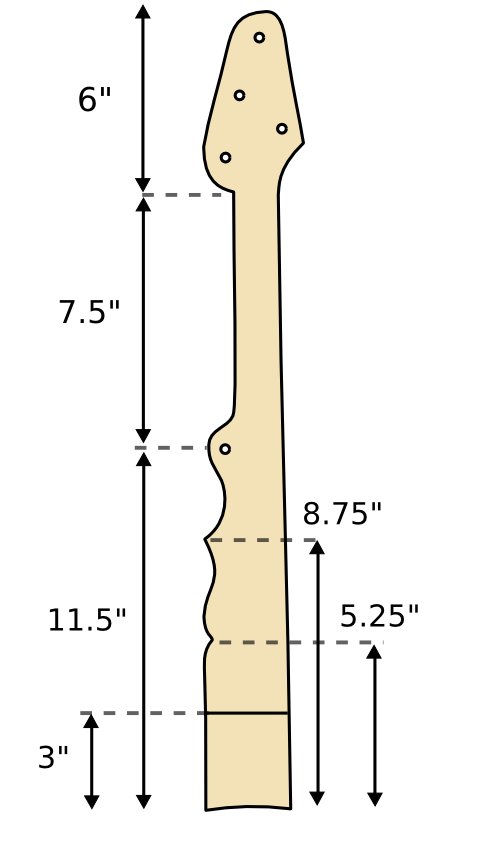
The Shape and Dimensions of the Neck
It is a double ogee neck with the 5th string peg going straight up through the neck from the back. The curves and points on the side of the neck serve as reference points for significant fret positions on the neck. For example, the sharp indentation nearest the bottom of the drawing, 5.25" from the heel, is where the 12th fret would be if there were frets. The middle of the curved indendation just under the 5th string peg is where the 7th fret would be.
One thing to note is that my finger board wood is only 24" long. So after I cut off the 6" I need to cover the peghead, I have only 18" left for the rest of the neck. The length of the neck is 7.5" plus 11.5" which adds up to 19". Oops. To deal with that issue, I will make a frailing scoop that goes up 3" from the heel, and that leaves only 16" of neck to cover with the finger board. I also want a frailing scoop, so that works out well.
One last consideration is the length of the tail on the neck with respect to being able to skewer it through the entire hoop. On the gourd banjo, this neck went all the way through the 14" gourd with 3 1/2" to spare for the tailpiece. So it should go through my 13" hoop just fine.
Well, that's the plan. It is fun to sit here and plan things out on this snowy Winter day. Hopefully I will be cutting some wood soon to get this thing going.
